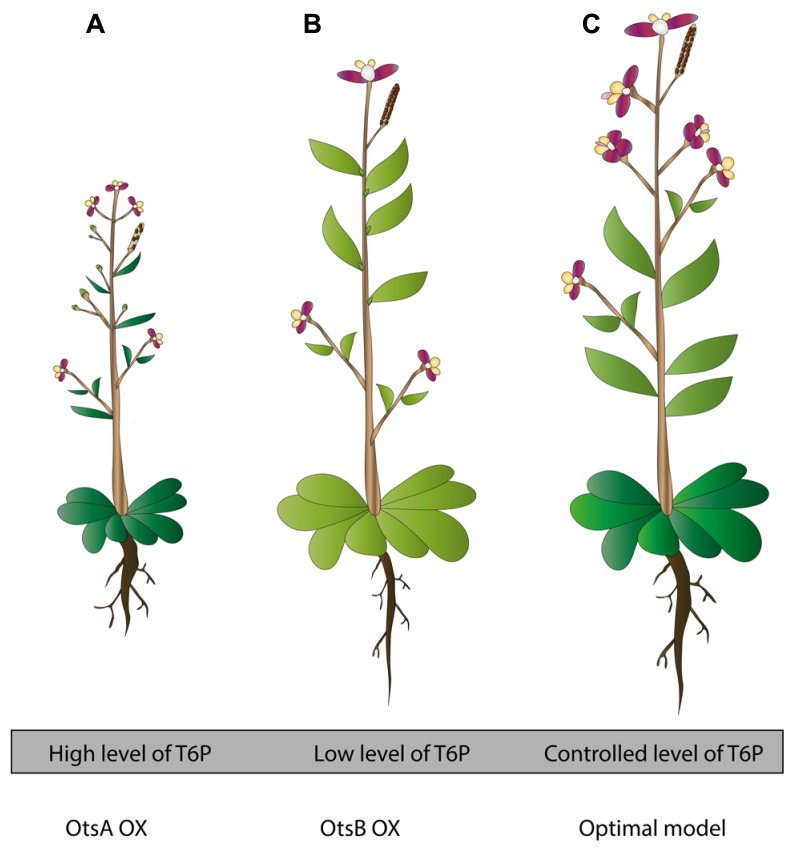FIGURE 1.
Transgenic plants in trehalose metabolism: toward an optimized approach for stress tolerant plants. (A) OtsA OX plants contain high levels of T6P. They develop poor seed set, experience reduced apical dominance, flower early and display reduced rosette and darker, lancet shaped leaves. In tobacco OtsA OX, root development is disturbed, showing thicker roots. In Chinese cabbage plants OtsA OX, thicker roots, well developed lateral roots and extensive root hairs were noticed. In general, these plants are better stress tolerant (based on Goddijn et al., 1997; Park et al., 2003; Schluepmann et al., 2003). (B) OtsB OX plants contain low levels of T6P. These plants show opposite phenotypes to (A). They develop plenty of seeds, they have distinct apical dominance, flower later, and they have a larger, paler-green rosette (based on Schluepmann et al., 2003). (C) Model for optimized transgenic trehalose metabolism plant. This plant has a controlled cellular level of T6P. This optimized model is the result of many factors; use of bifunctional constructs, use of condition specific promoters (for instance stress specific, depending on the destined region where the crop will be grown), use of cell-specific promoters (for instance in stomata, using TRE1 as target gene). In addition, this plant contains optimized constructs, yet unrevealed, connected to abiotic stress tolerance via trehalose metabolism. Ideally, this plant will be tolerant toward a wide range of abiotic stresses, generating high biomass, continuing growth in deteriorated circumstances, generating fertile seeds, and requiring little need for any other kind of maintenance (based on Karim et al., 2007; Van Houtte et al., 2013a).

